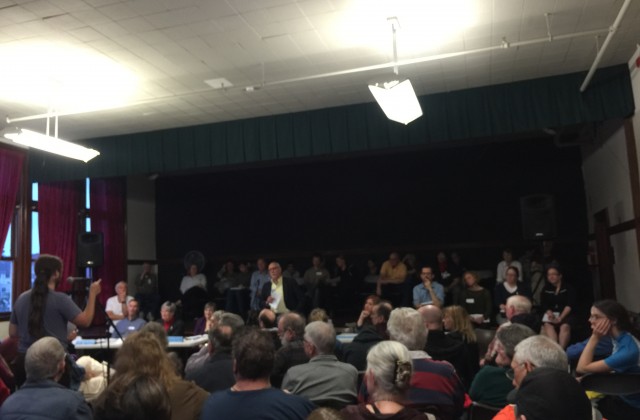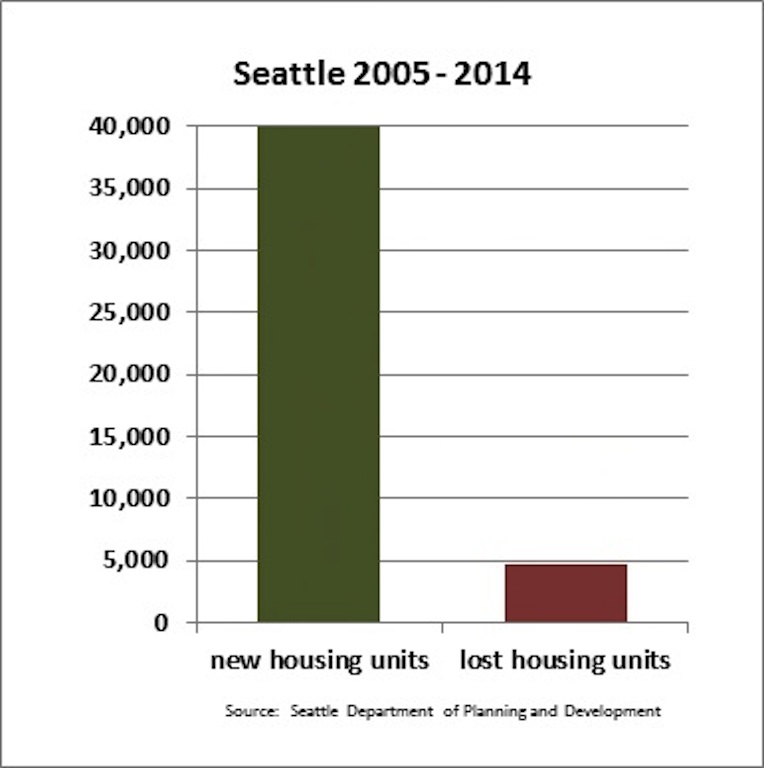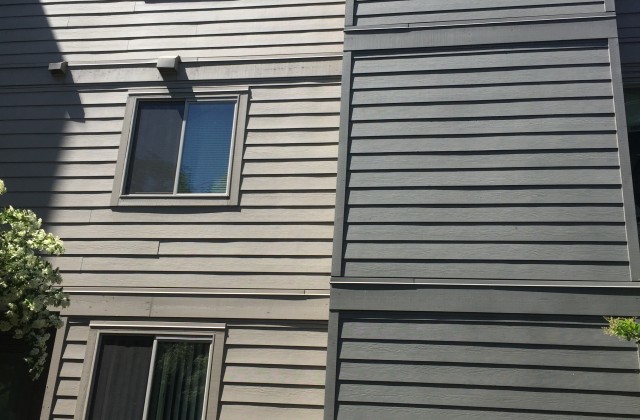On the Radio: More Discussion on New Effort at Rent Control
I was on local National Public Radio station KUOW last week pointing out the flaws of the latest efforts to control rent by the City. We put out a statement to the media last week with the Rental Housing Association of Washington explaining why Councilmember Savant’s proposed legislation to limit rent increases sounds like a great idea, but will actually disincentivize important improvements and add more bureaucracy and costs to a department that is already struggling to implement the existing rules they already have in the Rental Inspection Ordinance (RIO).
Also, there is a more positive and sensible solution to addressing repairs and keeping rents low. Low interest loans could help out older, smaller buildings make improvements and the savings could be passed on to both the landlord and the renter. That would mean no increases in the rent and a some funds to make repairs. The good news is that this idea is already in the Mayor’s Housing Affordability and Livability Agenda (HALA) recommendations:
I’ll quote it again. Recommendation P4 reads, in part
As part of expanding its preservation efforts, the City should develop and market a low-cost rehab loan program to complement its existing weatherization grants. This program would provide a compelling incentive for existing owners to improve their properties in exchange for an affordability covenant. Effective outreach, marketing and technical support will be critical components to the success of the program. The City should build on the success of its weatherization program by helping owners through the contracting process and with ongoing program compliance (page 32).
Urban Forest Symposium: Grow Neighborhoods AND Trees
Yesterday I presented on a panel at the University of Washington’s Urban Forest Symposium. I’ve embedded my graphically challenged power point presentation below. The bad news is that tree issues continue to constrain housing production, which adds to costs, limits supply and therefore boosts overall housing prices. The good news is that we have grown neighborhoods and trees. Our tree canopy has increased as we’ve seen big increases in new housing development and construction. The increase in tree canopy is a real example of where we might be headed in a positive direction with regulation.
I did learn some things. First, tree advocates aren’t really all that happy with the methodology the City uses to calculate canopy. Is canopy really the right measure to be using. I can sympathize. I said that my frustrations with the City’s poor use and slack methods for quantifying things both “good” and “bad” is leading to really bad policy outcomes. For example, some advocates don’t think laurel trees should count in the canopy count. And deciduous lose their leaves for part of the year. I told someone how much this reminds me of the sloppy way we have been measuring housing cost burden using old census data and the normative standard that households should spend exactly 30 percent of monthly income for housing.
Second, there are interesting ideas about how to better quantify existing tree inventory and value; how much is that exceptional tree worth to the community? I countered that lost housing is also a measurable loss that can and should be offset for saving a particular tree. How do we balance those competing values of tree preservation and housing. Nobody at the City in an elected leadership role seems to be interested in answering that question. Instead we muddle along battling over every tree on every site rather than collaborating on a methodology that would capture the value of trees and housing as they relate to each other. But it was a good day of learning for me.
U District Upzones: Herbold’s Modest Proposal
I stopped by a meeting organized by the Displacement Coalition last night about the proposed changes in zoning to the University District. The meeting was what we call in the business a “Twist and Shout Meeting,” a gathering to vent and blow off steam about a civic issues. Nothing is decided and the City isn’t officially listening or gathering input, the get together is really more of a pep rally to keep people emotionally charged about an issues. So the comments were mostly negative, decrying the ugly townhouses cropping up with no parking and people demanding a stop to all zoning changes, period. Then there was Councilmember Lisa Herbold’s comment. Herbold said that she hadn’t seen any official proposal yet from the Seattle City Planning and Development office, but she was proposing a new policy.
I’m paraphrasing, but Herbold said that she’d demand that any housing that demolished or replaced by new construction be accounted for and replaced. And if there was too much existing housing taken down or the kind of housing met some kind of criteria (Herbold didn’t say what that would be), she’d propose disincentives to build new housing.
That’s right. Disincentives for new housing.
I thought I had heard it all, from the idea that more housing means prices will go up to the notion that new housing is an impact that has to be offset with fees, fines, and taxes to generate money to build, yes, more housing.
Now a sitting Councilmember is proposing legislation or implementation of a policy somewhere in the City to create disincentives for the production of new housing. Just think about that for a minute. At a time when City officials wave their arms about a “housing crisis” Herbold is proposing less housing.
Make no mistake, the displacement myth is just that, a myth. So here’s a big fat chart based on data from the City:
We’ve said this over and over again. As a city, we are not plowing over thousands of units of subsidized housing or even lots of cheaper housing. And to the extent that housing units are being taken away, the ratio of replacement is huge, 40,000 units of new to less than 5,000 units “lost.” And remember, few if any of those 5,000 were subsidized and many were simply older single-family homes in low-rise zones being replaced with lots more multifamily housing.
Things at City Hall have taken a Swiftian turn again. First, more new housing to meet surging demand is an impact that has to be slowed down with taxes to punish developers for building what people want so the City can give money away to the non-profit sector to try and meet that need less efficiently. Now, we’re going to penalize and discourage lots of new housing to meet rising demand when it removes far fewer units. It’s not just cutting more, smaller slices of the housing pie, it’s actually making the pie smaller. It’s hard to believe we’re any closer to rational housing policy when there is a determined and studied effort at the highest levels of City Government to actually suppress housing supply.
If it wasn’t so serious, it might even be funny.
Statement on New Rent Restriction Legislation
New legislation will be proposed this week on controlling when landlords can raise rents. This is a joint statement prepared by Smart Growth Seattle and the Rental Housing Association of Washington.
At a time when there is deep concern about housing prices in Seattle, the City Council and Mayor should use every available existing tool and new ones to address rising rents. Unfortunately, the recently proposed Tenant Protection Ordinance (the so called “Carl Haglund” law) does neither, creating a new bureaucracy, costs, and confusion for renters and landlords. And the proposal was crafted with absolutely no communication with or advice from landlords or developers.
Existing Tools Need Improvement
The existing Rental Registration and Inspections Ordinance (RRIO) Program allows for inspection of units in any building for substandard conditions and creates an avenue for tenant complaints – and holding building owners accountable for substandard conditions. However, only a third of rental properties have been registered for the program. The City should continue to refine and improve this program.
It’s worth noting that the apartments in the building that spurred this legislation actually passed an RRIO inspection before it was sold.
Creating New Problems
The new program would,
- Create a parallel reporting process for tenants along side the existing programs;
- Involve the City in legally allowed and even small rent changes all across the city;
- Disincentivize repairs and improvements, ensuring some lower rents but at the expense of making the unit or building better;
- Dramatically increase the work load of already thinly stretched City staff; and
- Expose the City to legal action for violating the State’s preemption on rent control.
Taken together, this legislation will simply add confusion for tenants and housing providers, more costs for the City, and big disincentives to take on improvements to older, more affordable rental properties. This proposal has been made with no data to support it, only anecdotes, and without the involvement of people who own and operate rental housing in the city.
Solutions
A real solution would be to provide help with financing improvements to older buildings; this would lower costs and the savings could be passed on to renters. This solution would both incentivize improvements and preserve existing affordable housing. This proposal made by Smart Growth Seattle has tentative public support from the Tenants Union. Even better, it’s an idea in the Mayor’s Housing Affordability and Livability Agenda (HALA) Committee recommendations. Recommendation P4 reads, in part
As part of expanding its preservation efforts, the City should develop and market a low-cost rehab loan program to complement its existing weatherization grants. This program would provide a compelling incentive for existing owners to improve their properties in exchange for an affordability covenant. Effective outreach, marketing and technical support will be critical components to the success of the program. The City should build on the success of its weatherization program by helping owners through the contracting process and with ongoing program compliance (page 32).
The Rental Housing Association of Washington and Smart Growth Seattle would like to work with the City on solutions, but oppose this ordinance; it is unnecessary and doesn’t solve a problem but makes things worse.
Tales of the City: Hey Driver, I Have Your Thermos
Today I let the Universe down.
It started with a podcast interview for Marketing Professor Jeff Shulman at the University of Washington. Shulman is putting together a variety of perspectives on growth in Seattle and he wanted mine. So I decided to walk to the University from Capitol Hill. It was a beautiful day and the exercise and solitude is always welcome. I ended up being the phone much of the way dealing with some kind of glitch at Group Health that meant that I kept getting letters saying my coverage was terminated as of June 1. It couldn’t be. And the customer service representative agreed.
“What if I showed up in the emergency room with a broken leg next month?” I asked? “Would I be covered?”
“Well, no,” he said.
“Well, we gotta fix that,” I said.
“We’ll get it taken care of,” he promised.
James, the customer service representative did a great job. He explained the error and said that this time, it is fixed. I believe him. I want to believe him. What choice do I have? Until I get the next letter, I guess.
But still it was a beautiful and brisk walk. Somewhere along the way a man walking a bike stopped me and said, “You’re that real estate guy, right?” He was with a woman wearing a hat but with no bike.
“I read about you in The Stranger,” he said.
These moments are always a little unnerving because I don’t know if the guy loves me or hates me. For all I know this could be Jhande.
“Yes, I’m Roger Valdez,” I said extending my hand. “ What’s your name?”
He said his name and that he was from Eastlake and was in commercial real estate. He said he read my followed my work. We chatted a bit. I didn’t get the impression he thought I was all that bad, but he didn’t slap me on the back either.
I got to the Paccar building where the interview was going to happen and I was impressed with the building and especially its public spaces. And the building was a pleasant surprise. Most buildings at the UW are like taking a trip through a small intestine or something out of Terry Gilliam’s Brazil; just awful. Academic architecture seems to relish confusing, distended hallways with weird, incoherent and Kafkaesque numbering schemes.
“I’m looking for Room 2357.”
“Oh, you’re in the wrong place. That’s between Rooms M574 and the Warren Moon Interpretive Center.”
Anyway, it is a surprisingly airy and coherent building for an academic building.
I did the interview, which was, as Donald Trump would say, “Great. We did great!”
I talked about how we needed leadership that would talk about growth like it was Santa Claus, not Godzilla; growth brings along many gifts not destruction. We should welcome it, embrace it and leave it cookies and milk. I’m looking forward to hearing Shulman’s whole project which he says will come together later this year.
Shulman does two things for every interview, takes a selfie of the people he interviews and gives them a brand new Foster School of Business thermos mug thing. It’s beautiful thing. It’s polished stainless steel and looks like an artillery shell or a mortar. I had no place to put it. My bag was packed. So when I left, it became this awkward friend along for the trip back home. What should I do with this thing? When I went to lunch at the gyros place I felt like I should ask it what it wanted. Beef or lamb? It sat there staring at me the whole lunch like it was hungry.
Having finished lunch, I headed out to walk back to South Lake Union. I decided to head toward the University Bridge in the most direct possible route, down 45th and then to 11th across the bridge.
When I got to that intersection, 45th and 11th, I decided to cross from the east to the west side of Brooklyn. There was a black Honda stopped at the light. The walk sign came on. I looked at the Honda. Stopped. I started walking toward the walk sign. The Honda started to move. And in one of those achingly slow distortions of time, it kept going.
“He’s got to stop, right,” I thought. “I’m right here, so, he’ll have to stop or run over me.”
Well he didn’t stop. And I am guessing it was a he and it was one he since the windows were tinted completely black. I went on to hood, and somehow I could feel his foot on the gas, and he kept going.
“This is actually happening,” I thought as I did a pretty good stunt man roll off the windshield and onto the ground.
I could hear a metal spinning sound, like a top. It was that thermos. I rolled over and grabbed it. I stood up. I was a quarterback now. The Honda, disappearing down 45th, had a hatchback. I figured I could get the thermos right through that glass hatch. Right hand. Ready. Damn. He was just too far now. It wouldn’t have even hit the bumper.
I watched the car disappear into traffic.
And just as I thought about it I heard a voice call out.
“Hey! Did you get the license plate?” a guy in a truck who slowed down asked.
“No, “ I said. “Didn’t get it.”
A guy now standing waiting at the light and I chatted about cameras. There weren’t any.
All the way back to work, I kept thinking about the left-right-left accelerate problem. It’s the thing we do when were at a light and we look left, then right, then left and then there’s that moment when we put our foot down. That’s what happened. Left. Right. Left. Foot.
Who was the driver? Who Ran Down Roger? It’s like Who Shot JR? Many people with the means and the motive; but who knows? But he left without his thermos. It really belongs to him and I should have given it to him right through that hatchback. I hope one day I’ll run into the driver and that I’ll be able to apologize and give him his thermos. Until then I’ll hang onto it.
Cities can be rough and tumble places. The contact we have with each other spans the spectrum of joy and pain. I don’t want to end this story with some pat bromide. So I’ll just leave it right there.
And in the end, the Universe always wins.





